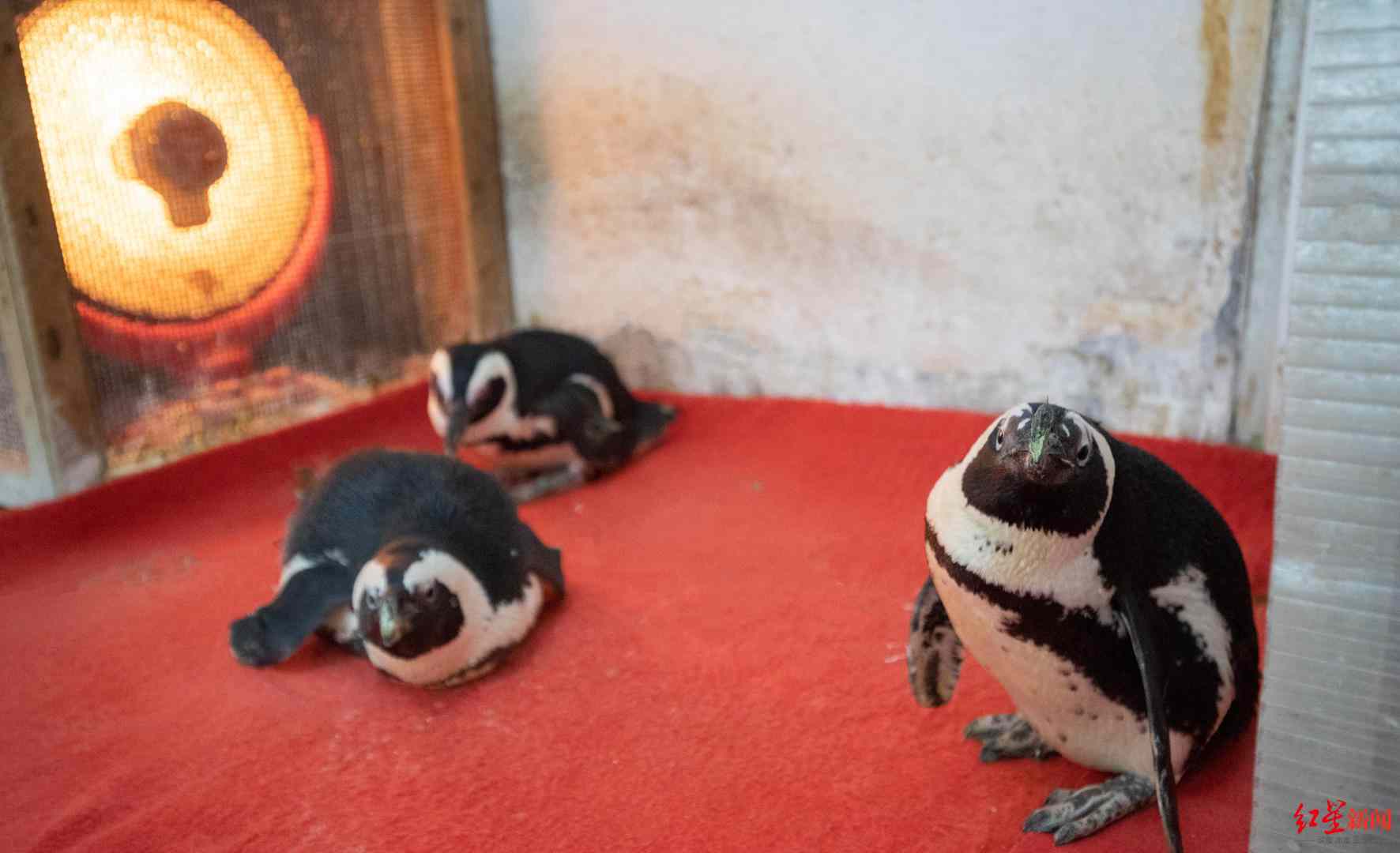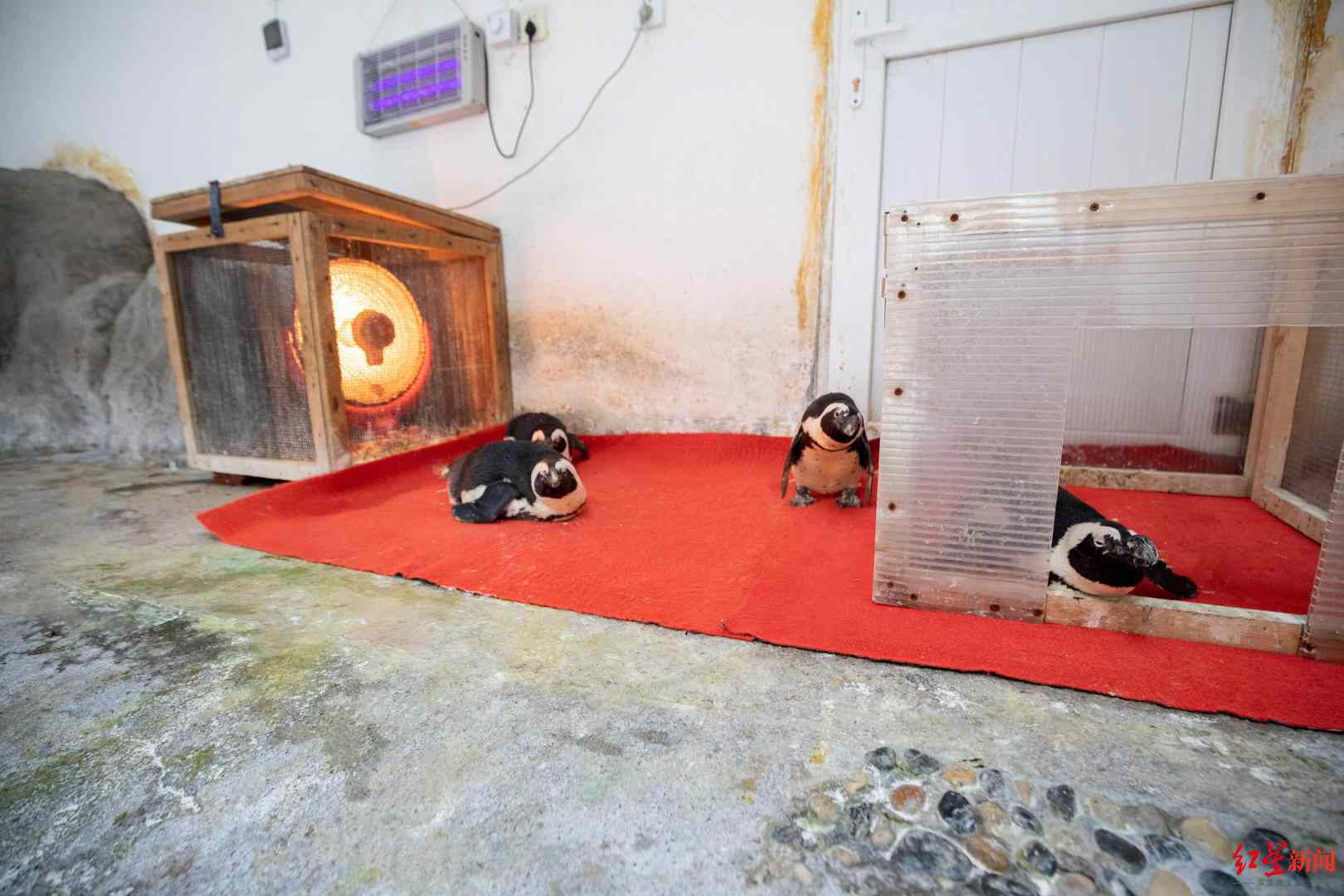


African penguins in the Chengdu Zoo keep themselves warm by sitting near an electric warmer. (Photo/Red Star News)
“Do penguins need to warm themselves by a fire?” Almost every visitor passing the penguin house of the Chengdu Zoo in Chengdu, capital of southwest China’s Sichuan province, raised the question when they saw four penguins sitting near an electric warmer, Red Star News reported on Nov. 26.
It turns out that these penguins do feel the cold in winter, as they are African penguins, also called black-footed penguins, found on the African continent, according to the keeper of these penguins.
The temperature of these African penguins’ living environment is between 4 degrees Celsius and 26 degrees Celsius, said Liu Yang, who is in charge of the feeding department at the Chengdu Zoo.

African penguins in the Chengdu Zoo keep themselves warm by sitting near an electric warmer. (Photo/Red Star News)
These four African penguins are about 11 years old, Liu disclosed, explaining that “people would easily think of penguins living on frozen and snow-covered land in the South Pole when we talk about penguins, but in fact voyagers first found penguins in Africa, exactly the same kind of African penguins that people see enjoying the warmth of heaters.”
The Chengdu Zoo began using electric heaters to help the penguins keep warm on Oct. 21, when the temperature was about 14 degrees Celsius, according to the keeper of these penguins, who said they will add another warmer to the penguin house when the weather gets colder.
“They need to stay near warmers to stay warm in winter, and when summer comes they also need ice to feel relief from the heat,” Liu said, adding that although they live in Africa, the temperature for a suitable living environment for them should be no more than 26 degrees Celsius.

Visitors are drawn to the African penguins sitting near a warmer in the Chengdu Zoo. (Photo/Red Star News)
Other than African penguins, the Chengdu Zoo has also used devices like electric heaters and heating radiators in the houses of animals including snakes, baboons, giraffes and elephants, according to Liu.
Of these animals who need to stay warm during the winter, some get cold as they come from the tropics, while others are advanced in their years, Liu disclosed.
In addition to using electric heaters and heating radiators, the zoo also helps animals keep warm by making their “bedding and mattresses” thicker, while also providing “hot springs” for them. For example, water in the pool of the terrapins is heated by heating rods.

Workers install radiant floor heating facilities for apes in the Chengdu Zoo. (Photo/Red Star News)
Radiant floor heating, a popular heating method, is expected to be put into use in the houses of many animals in the zoo this winter. Workers are now installing radiant floor heating facilities in the houses of animals including apes and lemurs.
The decision to adopt the method of radiant floor heating was made out of concern over electrical safety and heating effect, according to the Chengdu Zoo.

 Award-winning photos show poverty reduction achievements in NE China's Jilin province
Award-winning photos show poverty reduction achievements in NE China's Jilin province People dance to greet advent of New Year in Ameiqituo Town, Guizhou
People dance to greet advent of New Year in Ameiqituo Town, Guizhou Fire brigade in Shanghai holds group wedding
Fire brigade in Shanghai holds group wedding Tourists enjoy ice sculptures in Datan Town, north China
Tourists enjoy ice sculptures in Datan Town, north China Sunset scenery of Dayan Pagoda in Xi'an
Sunset scenery of Dayan Pagoda in Xi'an Tourists have fun at scenic spot in Nanlong Town, NW China
Tourists have fun at scenic spot in Nanlong Town, NW China Harbin attracts tourists by making best use of ice in winter
Harbin attracts tourists by making best use of ice in winter In pics: FIS Alpine Ski Women's World Cup Slalom
In pics: FIS Alpine Ski Women's World Cup Slalom Black-necked cranes rest at reservoir in Lhunzhub County, Lhasa
Black-necked cranes rest at reservoir in Lhunzhub County, Lhasa China's FAST telescope will be available to foreign scientists in April
China's FAST telescope will be available to foreign scientists in April